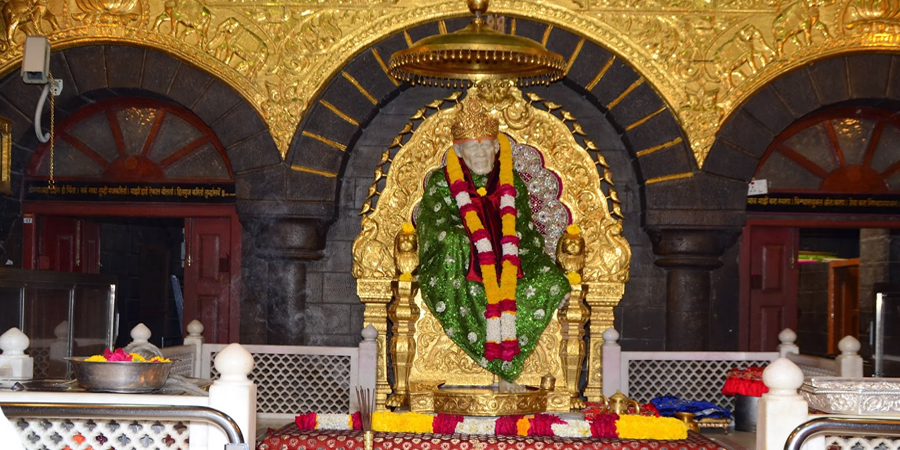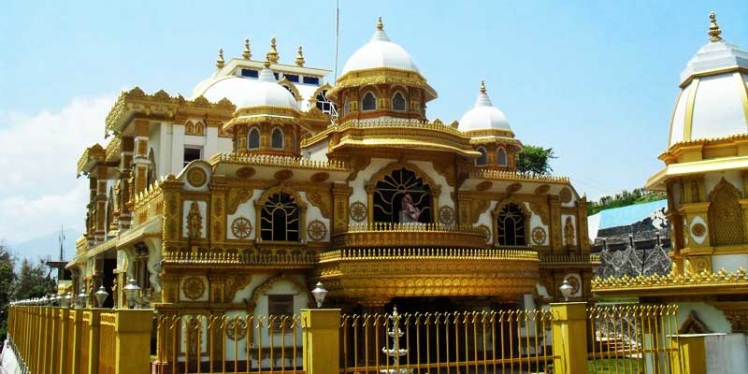

Thus Sai Baba denotes "holy father", "saintly father" or (venerable) poor old man. In several Indian and Middle Eastern languages the term Baba is an honorific signifying grandfather, father, old man or sir. The word Sai refers to a religious mendicant but can also mean God. The name Sai was given to him by the temple priest Mahalsapati when he returned to Shirdi in 1858. He is reported to have said that he fought with the army of Rani Lakshmibai of Jhansi during the Indian Rebellion of 1857. There are some indications that he met with many saints and fakirs and worked as a weaver. After some time he left the village and it is unknown where he went or what happened to him. The village children considered him mad and threw stones at him. Some of the religiously-inclined villagers (Mahalsapati, Appa Jogle and Kashinatha) visited him regularly. By day he associated with no one, by night he was afraid of nobody. The people of the village were wonder-struck to see such a young lad practicing hard penance, not minding heat or cold. The Sai Satcharita recounts the reaction of the villagers. He led an ascetic life, sitting motionless under a neem tree and meditating while sitting in an asana. This suggests a possible birth year of 1838. Although there is no agreement among biographers about the date of this event, it is generally accepted that Baba stayed in Shirdi for three years, disappeared for a year, and then returned permanently around 1858, just after the Indian Rebellion of 1857. īaba reportedly arrived at the village of Shirdi in the Ahmednagar District of Maharashtra, India, when he was about sixteen years old. On another occasion, Baba reportedly said that the fakir's wife had left him in the care of a Hindu guru, Venkusa of Selu, and that he had stayed with Venkusa for 12 years as his disciple.

According to multiple sources, he was brought up by a Fakir in early childhood. He reportedly told a close follower, Mahalsapati, that he was born to Deshastha Brahmin parents in the village of Pathri and had been entrusted to the care of a Muslim fakir in his infancy. īaba was notorious for giving vague, misleading and contradictory replies to questions concerning his parentage and origins, brusquely stating the information was unimportant. He is thought by devotees to be an avatar of the Hindu god Dattatreya. His teachings combined elements of Hinduism and Islam: he gave the Hindu name Dwarakamayi to the mosque in which he lived, practised both Hindu and Muslim rituals, and taught using words and figures that drew from both traditions.Īmong his favourite sayings to devotees were "Look to me, and I shall look to you" and " Allah tera bhala karega" (translation: God will bless you). Whether he was a Muslim or a Hindu remains unclear, but the distinction was of no consequence to the man himself. Sai Baba condemned discrimination based on religion or caste.

He stressed the importance of surrender to the true Satguru, who, having trodden the path to divine consciousness, can lead the disciple through the jungle of spiritual growth.
#Shirdi sai baba shirdi temple made of gold code
His teachings concentrate on a moral code of love, forgiveness, helping others, charity, contentment, inner peace, and devotion to God and Guru. 1838? - died 15 October 1918), also known as Shirdi Sai Baba, was an Indian spiritual master and fakir, considered to be a saint, revered by both Hindu and Muslim devotees during and after his lifetime.Īccording to accounts from his life, Sai Baba preached the importance of "realization of the self" and criticized "love towards perishable things". Sabka Malik Ek (Everyone's master is one)


 0 kommentar(er)
0 kommentar(er)
